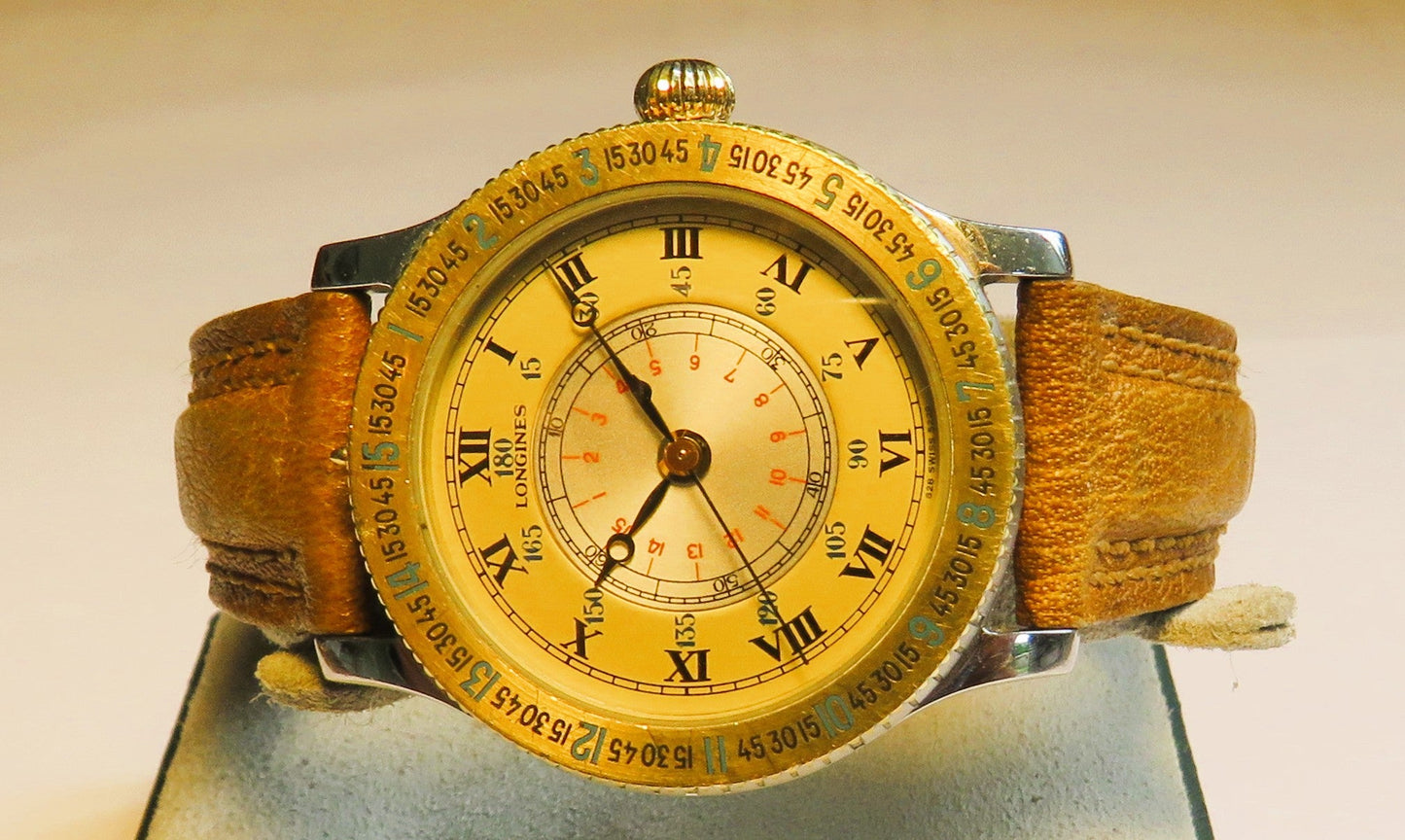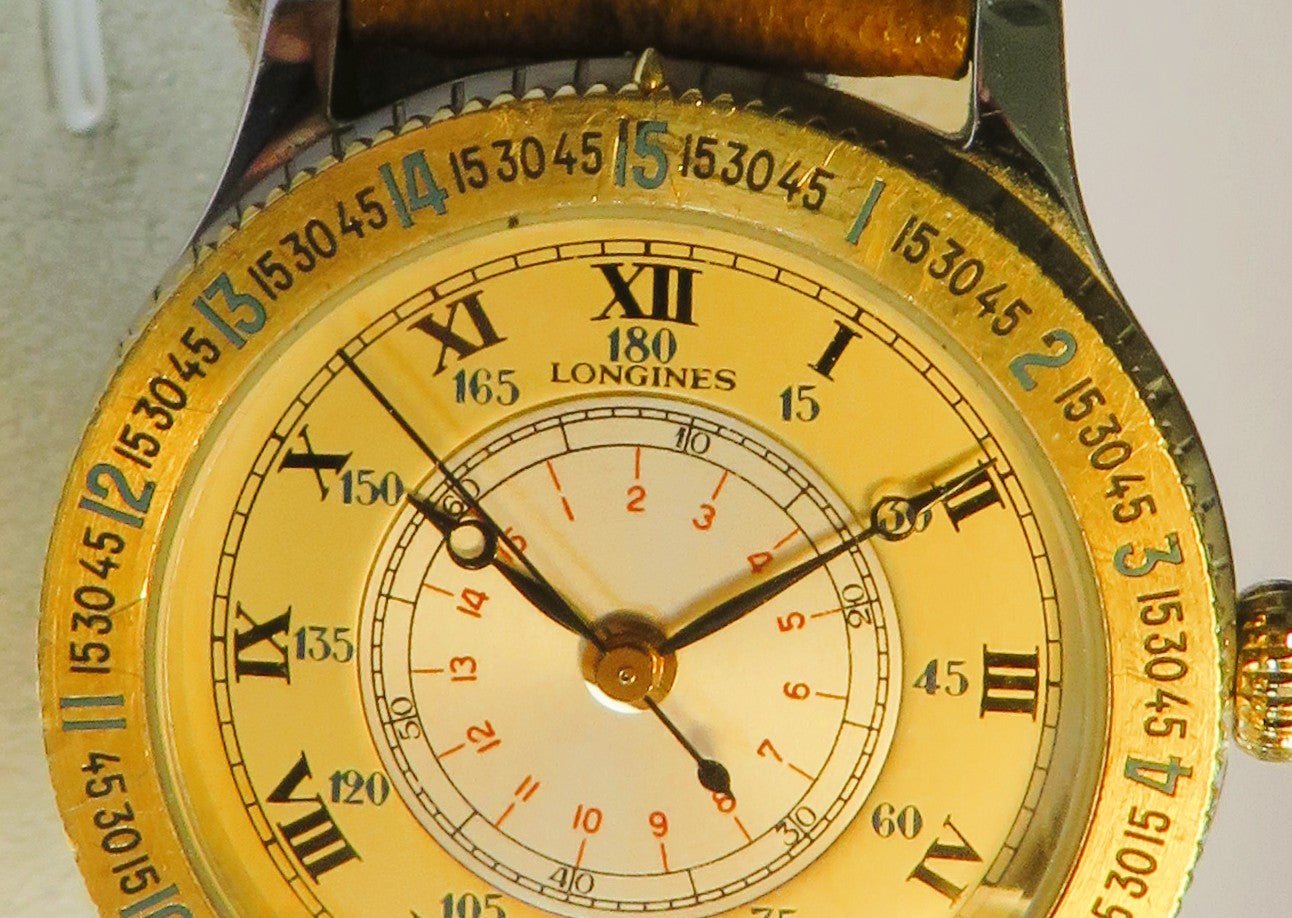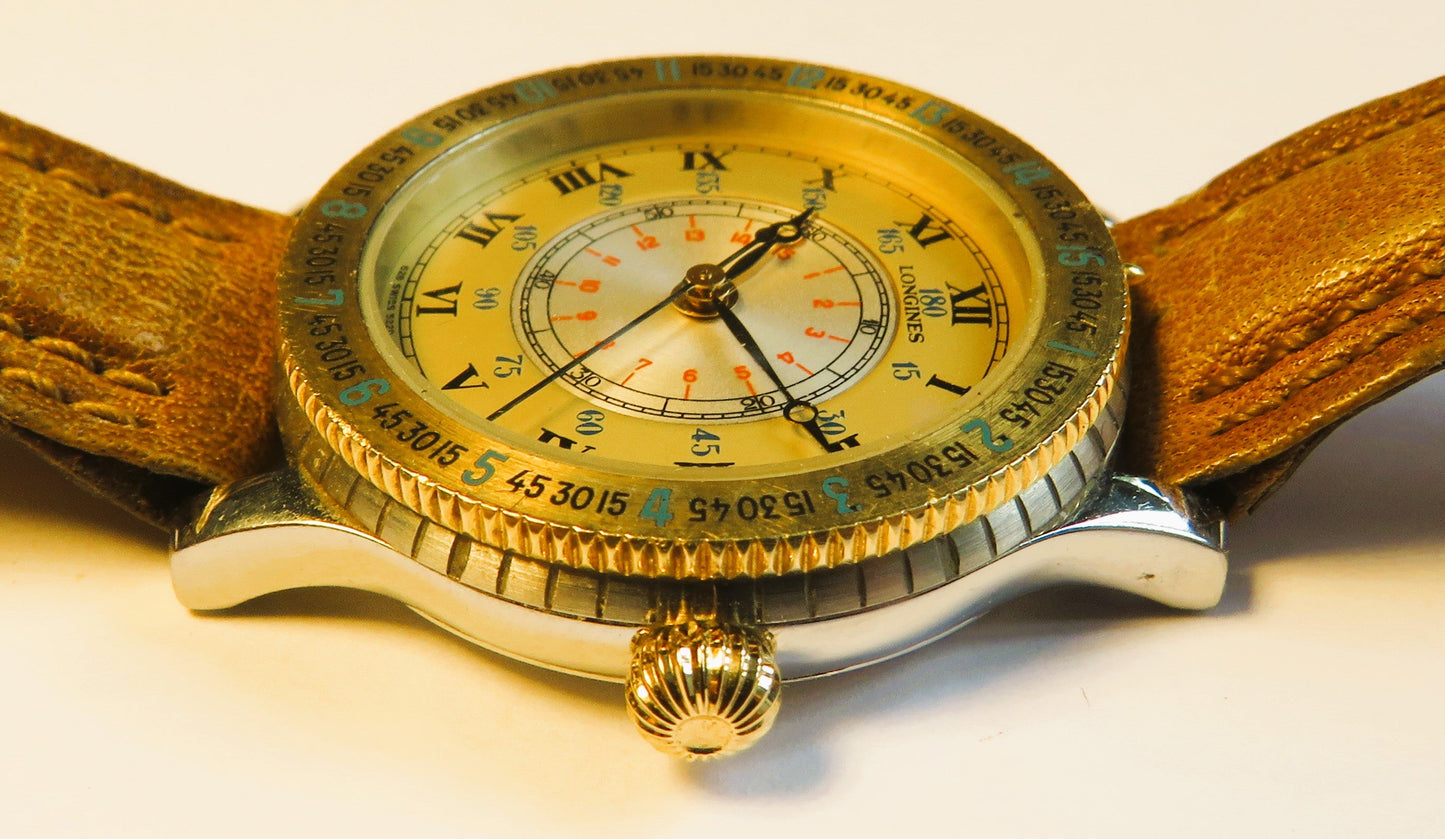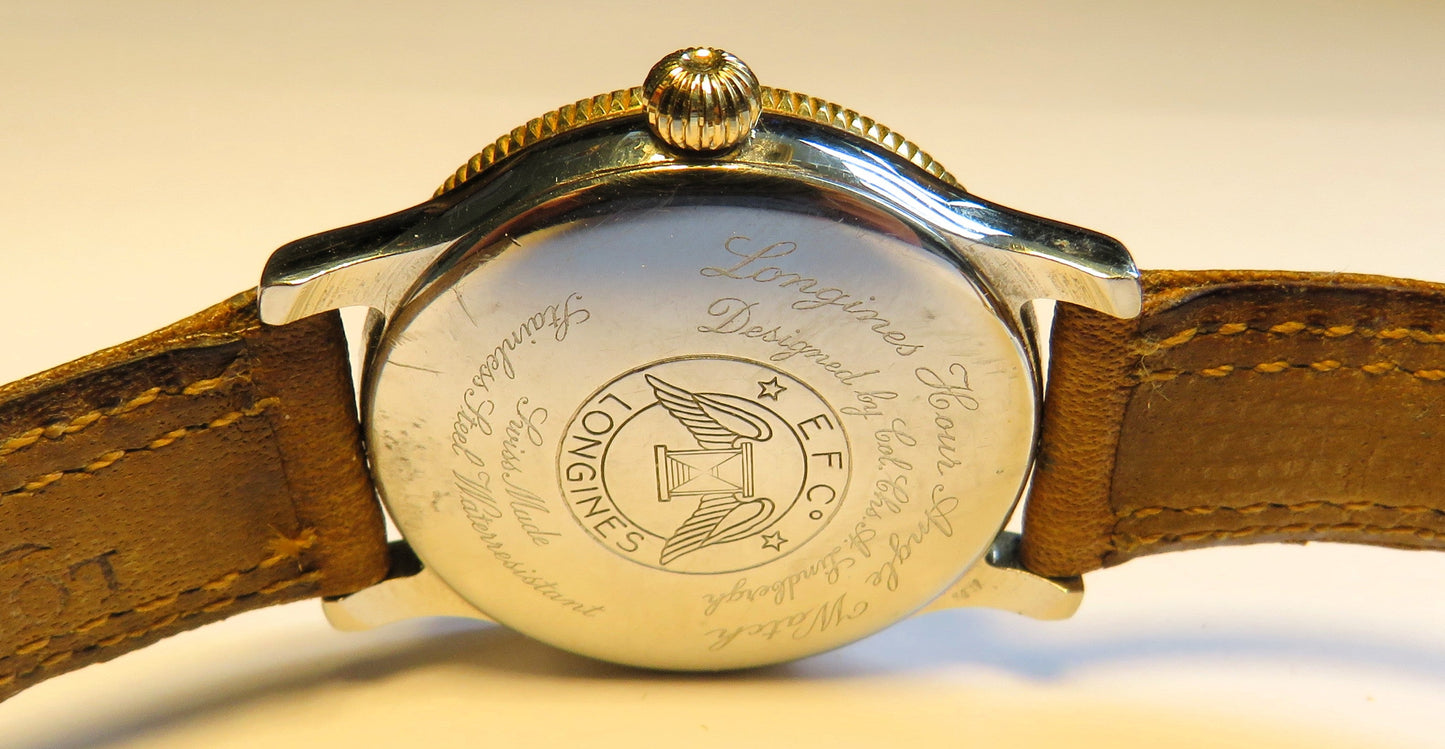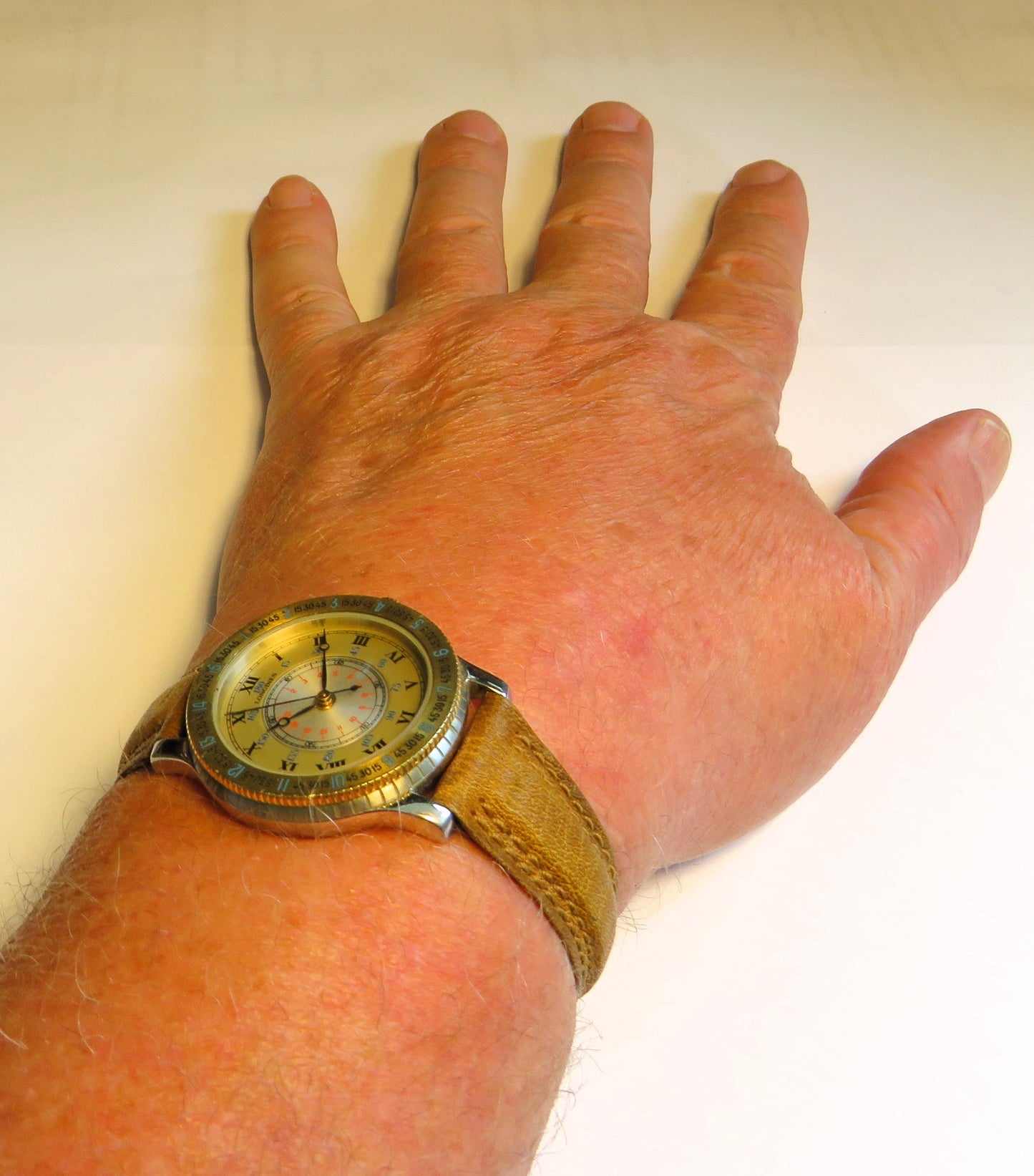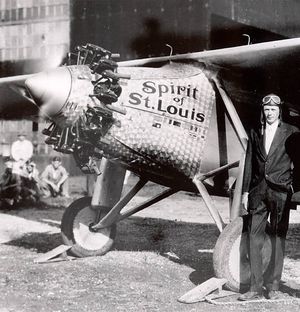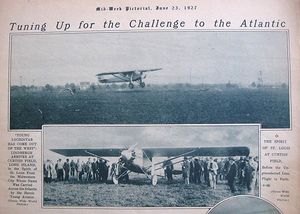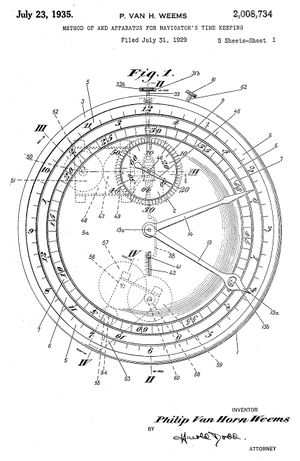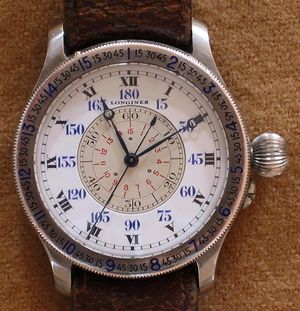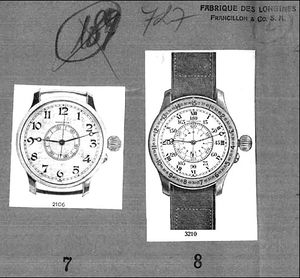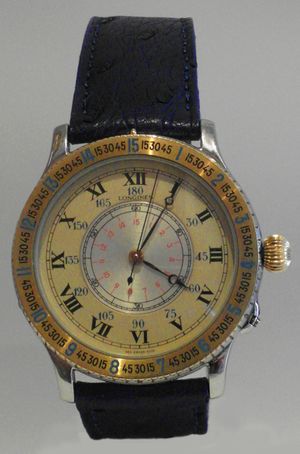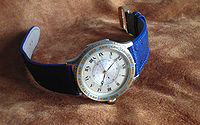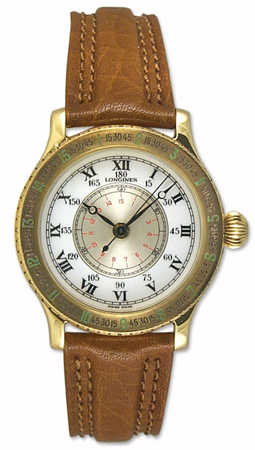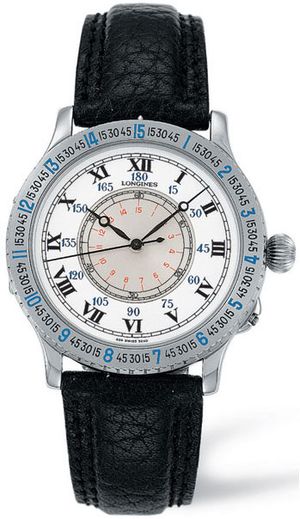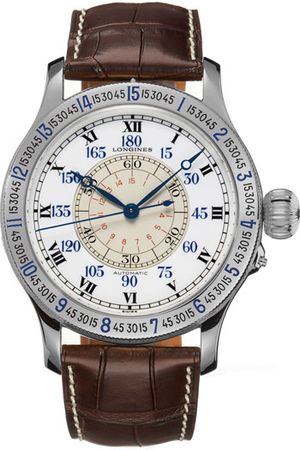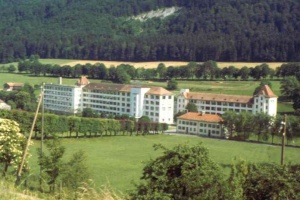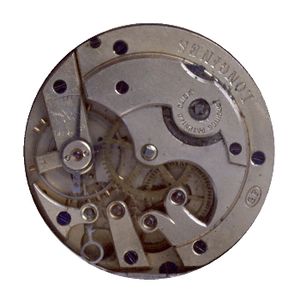Sammler-Uhren
Longines Hour Angle Watch HAU Cal. L.6281 Steel / Gold Automatic
Longines Hour Angle Watch HAU Cal. L.6281 Steel / Gold Automatic
Couldn't load pickup availability
Noble, original Longines Charles Lindbergh Hour Angle automatic men's wristwatch, the first and legendary pilot's watch
As is well known, the aviation pioneer Charles Lindbergh developed the "Hour Angle" together with Longines according to his own needs to use it for navigation during his first solo transatlantic flight
This magnificent piece has just completed a complete overhaul by a master watchmaker for €350, making it in perfect technical condition. Please consider this when making any price offers!
Description:
Longines Lindbergh Hour Angle wristwatch automatic pilot's watch legend with rotating 18K solid gold bezel
Unisex, steel/18K gold, reference number 989.5215, caliber L628.1, manufactured in 1990, automatic, dial with Roman numerals, steel case with fluted, rotating bezel in 18K yellow gold, leather strap with pin buckle
Height 37 mm x width with crown 36 mm, strap length 20.5 cm
This magnificent piece of design and pilot's watch history is running smoothly (accuracy not tested)
EZ 1-2: barely noticeable signs of age or wear on case and bracelet, fresh from a complete overhaul, runs smoothly (accuracy not tested)
History of the Longines Lindberg Hour Angle Watch (Source: WatchWiki):
Longines Lindbergh
Hour angle watch from Longines
Story
American aviation pioneer Charles A. Lindbergh , who on May 20 , 1927 , was the first to fly solo across the Atlantic from New York (Roosevelt Field, 7:52 a.m.) to Paris (Le Bourget, May 21 , 10:22 p.m.) in a single-engine airplane, the "Spirit of St. Louis," advised Longines on the development of a special wristwatch that would make determining longitude relatively quicker and easier using a sextant, a radio signal, and a star chart. This pilot's watch became a milestone in the watchmaking world.
After returning to his hometown of St. Louis, recovering from the rigors of the Atlantic crossing, the trained mechanic drew initial sketches of a wristwatch specifically tailored to the needs of a pilot during a long-distance flight. Around the turn of the year 1930/1931, Lindbergh put his sketch in an envelope and sent it to John PV Heinmüller, President of the Federation International of Aviation (FIA) in New York City. Heinmüller was both a director of the Longines Wittnauer Watch Co. in America and a passionate pilot who immediately liked the designs and headed to Saint-Imier at the earliest opportunity. After just five months—March to August 1931 —the design of the first hour angle watch was completed. The ingenious design concept, which allowed the watch to be quickly synchronized with the radio time signal using a central, rotating subdial, did not originate from Lindbergh, but from the American commander and navigation instructor Philip van Horn Weems. Lindbergh's idea was merely an extension of Weems's design, which was filed with the U.S. Patent Office two years later ( 1929 ) under patent number 2008734. Even before the actual hour angle clock of 1931 , Longines had produced a similar watch in the year of the Atlantic crossing (see: Longines Weems ).
Its name "hour-angle watch" or "the hour-angle watch" came from the fact that the most important part of determining longitude, the hour angle of Greenwich, could be read directly from the clock.
In August 1931, this watch was released simultaneously in Europe and overseas under the name "Lindbergh." Longines used the hand-wound caliber 18.69 NSC with a central second hand. This watch had a diameter of 47.5 mm and a large onion-shaped crown for winding, which was easier to grip and turn even with thick gloves. Approximately 2,000 of the "first generation" of the hour angle watch were produced.
In November 2010, a Longines prototype was sold for CHF 31,250 at the renowned auction house Christie's in Geneva under lot no. 337 (Sale 1376).
The "second generation" of the Hour Angle Watch was released in 1938. It used the Longines Caliber 37.9, also a hand-wound movement. The diameter of the watch itself remained the same as the first version from 1931 , at 47.5 mm. Together with the first generation with the Caliber 18.69 NSC, a total of 4,000 pieces were produced.
In 1987 , after Longines was acquired by the SMH Group, a collection of the Hour Angle Watch was re-released after a hiatus of several decades to celebrate the 60th anniversary of the Lindbergh landing at Le Bourget: the "3rd Generation." The watch was considerably smaller than the original and featured a hinged case back with a mineral crystal , allowing a clear view of the movement. The Longines Caliber L989.2 was the first to find its place in the "3rd Generation" of the Hour Angle Watch. This automatic caliber was one of the thinnest automatic movements and, unfortunately, the last movement produced by Longines in-house from St. Imier. The rare and highly sought-after Longines Caliber L989.2 was sold shortly thereafter to the Swiss chronograph movement manufacturer Lemania and is still produced today as the Lemania Caliber 8810 with additional sub-variants. After the SMH integration, with one exception, only ETA movements were used. These were followed by the calibers L628.1 (ETA 2892-A2), L614.2 (ETA 2892-A2), L876.2 with L878.4 (Longines L550 and 18.69), and most recently the L699.2 (ETA Valgranges A07 111). A chronograph version (Ref. 674.5232, L674.4 - modified caliber ETA Valjoux 7750) was also presented. Since then, the watch has been one of the classics in the brand's range.
Due to the great interest in the original model, Longines also released a limited reissue of the original in 1990 (18K yellow gold case, 100 pieces edition with case, the airplane model of the "Spirit of St.Louis" and a book).
In 2002, a strictly limited "replica" series featuring the hand-wound caliber L878.4 was presented to mark the 75th anniversary. With a case diameter of 47.5 mm, this watch again corresponded to the first generation from 1931.
In 2007, another "replica" version was released with the automatic movement L699.2, also with a case diameter of 47.5 mm.
Reference history
(August 1931-1937) "Lindbergh"
Factory
Functions
Housing
bracelet
|
Information about the Swiss luxury watch manufacturer Longines (source: WatchWiki):
Longines/de
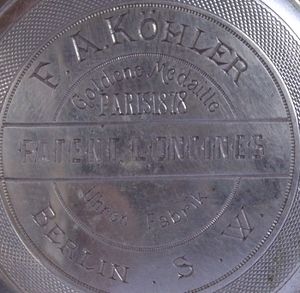
awarded a gold medal at the World Exhibition in Paris in 1878.
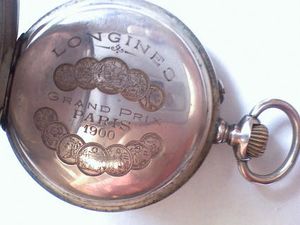
>awarded the Grand Prize La Renommee at the World Exhibition in Paris in 1900.
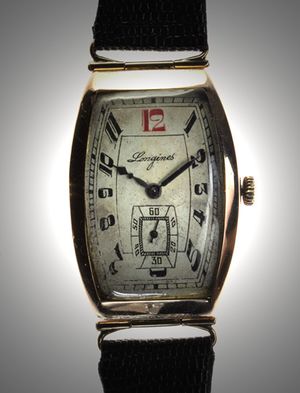
Men's wristwatch from the 1920s.
Swiss watch manufacturer
Story
Agassiz & Co.
(see also: Agassiz Watch Co. )
On February 25, 1833, Auguste Agassiz founded Raiguel Jeune & Co., a company for the manufacture and sale of utility watches, in Saint-Imier , Switzerland, together with watch dealer Henri Raiguel and Florian Morel . After Henri Raiguel's retirement in November 1838 , the company traded under the name Agassiz & Co. Agassiz exported watches to the USA. JA ABRY, for example, took over Agassiz's commercial agency in New York. After Florian Morel's retirement on December 31 , 1846 , Auguste Agassiz became the sole owner of the company. Agassiz presented his robust watches "in the style of Saint-Imier" at trade fairs throughout Europe and quickly gained an excellent reputation.
Due to his failing health, Agassiz handed over management of the company to Edouard Savoye in the early 1850s. At Auguste Agassiz 's request, his nephew Ernest Francillon joined the company in mid- 1852 . In 1853 , Ernest Francillon went to Val-de-Travers for a year to familiarize himself with watchmaking and sales. From 1854, he assumed management positions at Agassiz.
Ernest Francillon & Co.
On July 1, 1862, Ernest Francillon took over the manufactory from Agassiz (Agassiz became a limited partner). Soon, more than 20,000 watches (open pocket watches with cylinder and lever escapements, as well as small ladies' watches) were being produced annually. To convert watchmaking to serial production, the company decided to build a new watch factory.
E. Francillon, Longines, Suisse
In 1866, Ernest Francillon acquired some land outside the village of Saint-Imier , in the meadows of the Langgewann (Es Longines) district . In 1867 , with the active assistance of engineer Jacques David, he built a pocket watch bearing the name "E. Francillon, Longines, Suisse."
In 1873, Jaques David became technical director and limited partner.
In order to protect themselves against counterfeiting, from 1874 onwards the
The winged hourglass is applied to all movements and cases. Exceptions are movements that were signed by the customer on behalf of the customer.
The successful presentation of the watches at the 1878 World's Fair in Paris brought a flood of orders, including from the USA. In the same year, the first chronograph movement, the Longines 20H caliber, was developed. Demand for the Longines 18L open-winding caliber could barely be satisfied. In 1879, the factory was expanded. Jacques David was appointed to the management team. Only movements that were cased in the USA for customs purposes were produced for the American market. From 1885 onward, the sales success of Longines watches in the USA was primarily due to the Wittnauer watch dealership.
In 1886 , the Chasseral clock, a cheap anchor clock with a winding mechanism on the bow and a nickel case, was manufactured and put on the market in order to effectively counter the American competition ( Waterbury system).
The name "Longines" was registered with the Federal Office of Intellectual Property on May 27, 1889. On March 27, 1893 , it was registered with the International Office of Intellectual Property, becoming the oldest registered watch brand in the world.
After Francillon's death in 1900 , Jacques David, Baptiste Savoye, and Louis Gagnebin led the company. The first mechanical ladies' pendant watches were created in 1903. Two years later, the first mechanically manufactured wristwatch followed, eventually replacing the pocket watch in 1919. In 1907, Adrian Francillon, a nephew of Ernest Francillon, joined the company.
In the service of timekeeping
In the following years, Longines revolutionized timekeeping in sports and supported scientific expeditions. Based on his experience with the problem of rapid positioning, American aviation pioneer Charles A. Lindbergh advised Longines on the development of a special wristwatch ( an hour angle watch ) that would enable quick and easy longitude determination.
In 1945, Longines launched the first self-winding watch. In 1952 , Longines became the Official Timekeeper of the Oslo Winter Olympics. In 1960, the world's thinnest electromagnetic movement of its category was developed. In 1961, Longines acquired a majority stake in Record Watch , thus becoming the owner of the company. In 1967, the "Ultra-Chron" model was launched, a high-precision automatic wristwatch with 36,000 vibrations per hour. In 1969, the "Ultra-Quartz" was introduced.
Part of the Swatch Group
With the advent of quartz watches, the company, like many other watch manufacturers, ran into financial difficulties in the early 1980s. Longines was subsequently integrated into the SMH Group, at the time the largest Swiss watch manufacturer, which in turn was absorbed into the Swatch Group, now the world's largest watch company. The current model range includes both classics with mechanical movements, such as the Longines Lindbergh , and quartz watches.
In 2007 , as a tribute to the first true pilot's watch in watch history, the Longines Weems navigation watch (then the forerunner of the Longines Lindbergh ), a model called the Longines Weems Second-Setting Watch was launched.
